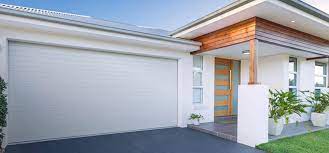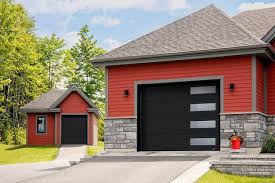Reprogramming your Genie Garage Door Repair opener can be a relatively straightforward process. By following these steps carefully, you should be able to reprogram your garage door opener successfully. Please note that these instructions may vary slightly depending on the specific model of your Genie garage door opener. Always consult your owner’s manual for model-specific instructions.

Before you begin, make sure you have the following items:
- A ladder (if needed)
- A compatible remote control for your Genie garage door opener
- The owner’s manual for your Genie garage door opener
Now, let’s get started with the reprogramming process:
Step 1: Clearing Memory
- Locate the “Learn Code” button on your Genie garage door opener. This button is typically found on the motor head or near the antenna wire.
- Press and hold the “Learn Code” button until the indicator light beside it turns on and remains lit (usually about 10 seconds). This action will clear the memory of your garage door opener, erasing all previously programmed remote controls.
Step 2: Programming Remote Control
- Decide which button on your Genie remote control you want to use to operate your garage door opener.
- Press and hold that chosen button on the remote control.
- While holding the button on the remote control, locate the “Learn Code” button on the Genie garage door opener motor head or near the antenna wire.
- Press the “Learn Code” button on the opener once. The indicator light should blink and then remain lit.
- Release the button on the remote control.
Step 3: Testing the Remote Control
- Stand at least 5 feet away from the Genie garage door opener.
- Press the button on the remote control that you just programmed.
- The garage door should begin to move. If it does, the programming process is complete.
- If the door doesn’t move or doesn’t move properly, repeat the programming process from Step 2.
Step 4: Programming Additional Remote Controls (if needed)
- To program additional remote controls, repeat Step 2 for each remote control, using a different button on each remote.
- Ensure that each remote control is programmed within 30 seconds of pressing the “Learn Code” button on the opener.
Step 5: Erasing All Remote Controls (Optional)
- If you want to erase all previously programmed remote controls from your Genie garage door opener, follow the steps in Step 1 again. This will clear the memory completely.
Congratulations! You have successfully reprogrammed your Genie garage door opener. Your remote control(s) should now operate the garage door as intended. Remember to keep your owner’s manual in a safe place for future reference.
Note: If you encounter any difficulties during the reprogramming process, consult your Genie Garage Door Repair opener’s owner’s manual or contact Genie customer support for assistance.
The Garage Floor Company
866-507-0096






